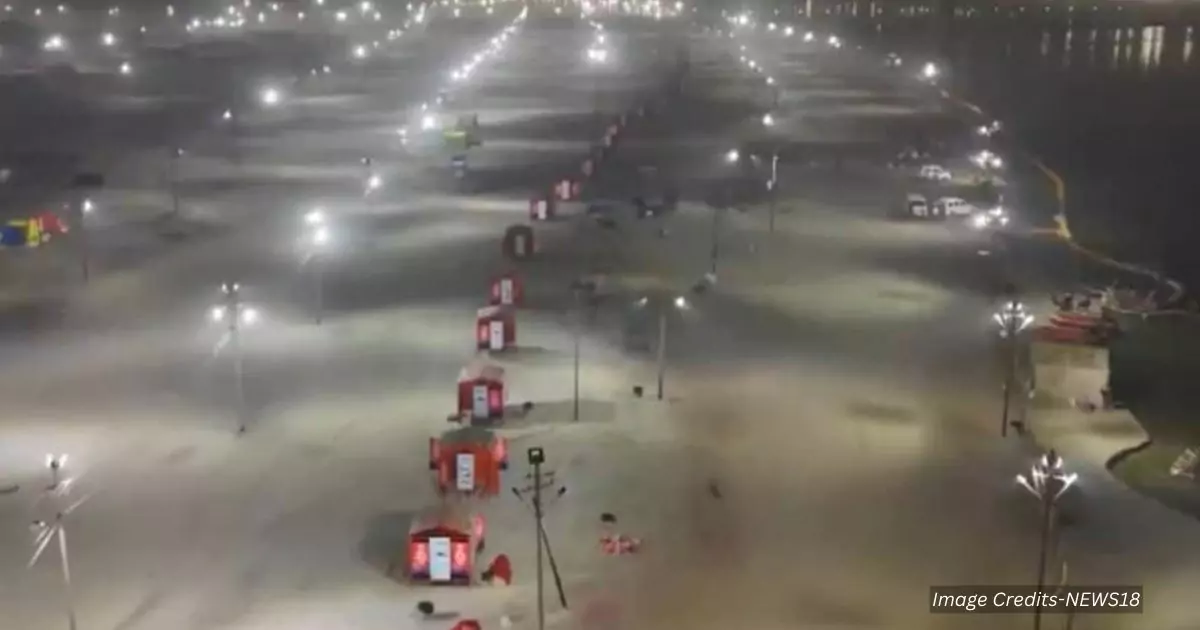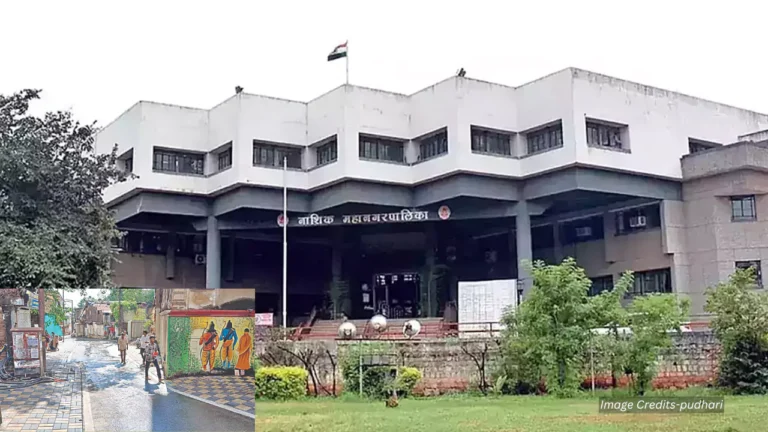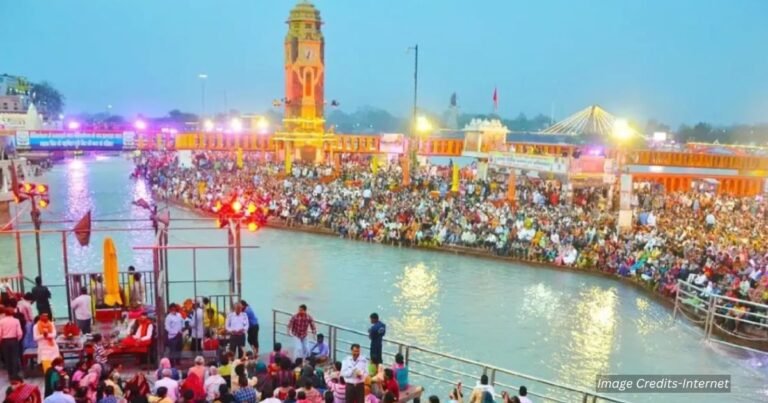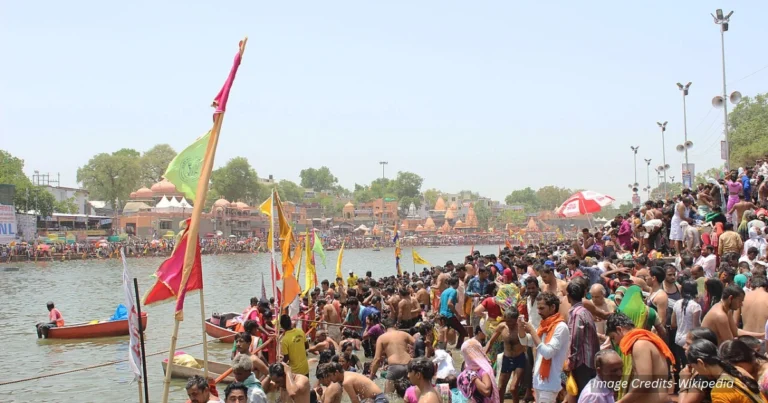Research suggests the cleanup after Mahakumbh 2025 in Prayagraj involves restoring 4,000 hectares of land within strict deadlines, with waste disposal mandated within 15 days. It seems likely that waste management will be completed by March 13, 2025, while structure dismantling, like 500 km of checkered plates, may take until May 31, 2025. The evidence leans toward a complex process, with multiple departments coordinating, facing challenges like scale and environmental sensitivity. There is controversy around the exact scope of the 15-day deadline, as it may apply only to waste disposal, not full land restoration.

Mahakumbh 2025 concluded on February 26, 2025, after hosting an estimated 660 million devotees over 45 days in Prayagraj. Now, authorities face the task of restoring the temporary city, covering 4,000 hectares, to its original state.
Mahakumbh 2025 Cleanup and Land Restoration in Prayagraj
This report provides a detailed exploration of the cleanup and land restoration efforts following the conclusion of Mahakumbh 2025 in Prayagraj, India, on February 26, 2025. It covers the scale of the task, specific deadlines, administrative frameworks, and challenges, aiming to offer a thorough understanding for stakeholders, environmentalists, and the public, especially given the complexity and urgency of the 15-day deadline for initial cleanup phases and the controversy around reported attendance figures.
The Mahakumbh Mela, held every 12 years in Prayag Raj at the Triveni Sangam (confluence of Ganga, Yamuna, and Saraswati), is a major Hindu festival known for its spiritual significance, attracting millions for rituals like the shahi snan (royal bath), believed to purify sins and offer spiritual liberation. The 2025 event, concluding on February 26, 2025, as per 2025 Prayag Maha Kumbh Mela – Wikipedia, marked a full orbital revolution of Jupiter around the Sun, spanning 45 days from January 13 to February 26, 2025, and hosted an unprecedented 660 million devotees, making it the world’s largest religious congregation in history, according to the provided article.
To accommodate this staggering footfall, a temporary city was erected, spanning 4,000 hectares with three lakh tents, 1,50,000 toilets, and extensive infrastructure, including 500 kilometers of checkered plates, 30 pontoon bridges, 1,306 kilometers of underground pipelines, and 1,582 kilometers of overhead power cables. Now, as the final devotees depart, authorities face the formidable challenge of restoring the land to its original form, particularly the sacred floodplains, within strict environmental and temporal constraints.
Scale of the Cleanup Task
The cleanup operation is massive, given the scale of the infrastructure built for the event. The temporary city covered 4,000 hectares, equivalent to 40 square kilometers, and included:
- Three lakh tents for accommodation.
- 1,50,000 toilets to manage sanitation for millions.
- 500 kilometers of checkered plates for pathways.
- 30 pontoon bridges for connectivity across the Sangam.
- 1,306 kilometers of underground drinking water pipelines with 70,000 tap connections and 85 tubewells.
- 1,582 kilometers of overhead power cables, along with 45 substations, 78,000 LED lights, and 2,000 hybrid solar lights.
This infrastructure, while essential for the event, must now be dismantled without leaving any permanent footprint, especially on the sensitive floodplain area, which is crucial for the ecological balance of the region.
Specific Tasks and Deadlines
The cleanup process is divided into several key tasks, each with specific deadlines, as outlined by officials from Mahakumbh Nagar and various departments:
| Task | Details | Deadline |
|---|---|---|
| Waste Disposal | Manage and dispose of 200-300 metric tons daily waste, processed at Baswar plant | March 13, 2025 (15 days from Feb 26) |
| Checkered Plates and Pontoon Bridges | Remove 500 km of checkered plates and 30 pontoon bridges | May 15, 2025 |
| Underground Pipelines and Water Infrastructure | Remove 1,306 km of pipelines, 70,000 tap connections, and 85 tubewells | May 31, 2025 |
| Power Infrastructure | Remove 1,582 km of overhead power cables, 45 substations, 78,000 LED lights, 2,000 hybrid solar lights | May 31, 2025 |
The waste disposal deadline of March 13, 2025, is mandated by the National Green Tribunal (NGT), emphasizing the urgency of clearing all waste to prevent environmental contamination. The structure dismantling deadlines, however, extend to May 31, 2025, indicating a phased approach to land restoration.
Administrative Framework and Phased Dismantling
One of the unique administrative decisions for Mahakumbh 2025 was the creation of Mahakumbh Nagar as Uttar Pradesh’s 76th district, exclusively for managing the fair. This temporary district, led by District Magistrate Vijay Kiran Anand, facilitated seamless administration during the event. However, Additional District Magistrate Vivek Chaturvedi confirmed that Mahakumbh Nagar will cease to exist by March 31, 2025, reverting to Prayagraj’s regular administrative framework. The Prayagraj Mela Authority (PMA) will notify the state government, following which an official order terminating its district status will be issued.
The dismantling operation is proceeding in phases, with different departments assigned specific tasks:
- The Public Works Department (PWD), led by Chief Engineer AK Dwivedi, is tasked with removing the 500 kilometers of checkered plates and 30 pontoon bridges, a process expected to take almost as long as installation (75 days), with a deadline of May 15, 2025.
- The UP Jal Nigam, under Chief Engineer Sanjay Gautam, is responsible for removing 1,306 kilometers of underground pipelines, ensuring no infrastructure remains buried, with a deadline of May 31, 2025.
- The Power Department faces one of the most complex tasks, removing 1,582 kilometers of overhead power cables and associated infrastructure, with physical removal completed by May 31, 2025, and a detailed audit continuing until October 2025, as stated by officials.
This phased approach ensures that each department can focus on its area of expertise, coordinating to meet the overall goal of land restoration.
Waste Management and Environmental Concerns
Waste management is a critical component, with officials estimating daily generation of 200 to 300 metric tons during the event. This waste was transported to the Baswar waste processing plant in Ghoorpur, 20 kilometers from the Mela site, which has a capacity of over 1,000 metric tons per day, ensuring efficient processing throughout the festival. Now, the focus shifts to ensuring no residual waste is left, with the NGT’s 15-day deadline (March 13, 2025) for disposal being a key benchmark.
Environmental concerns are paramount, given the floodplain’s sensitivity. The NGT has emphasized that the floodplains must be restored to their natural state, with no permanent alterations. This includes ensuring that the soil structure is not disturbed and that the natural flow of water is maintained, crucial for the region’s ecological balance. Past Kumbh Melas, like the 2013 and 2019 events, faced criticisms for incomplete cleanup and environmental damage, but the government seems to have learned from these, with enhanced planning and resources this time.
प्रयागराज महाकुम्भ के वो 45 दिन जब प्रयागराज में बरसा ‘अमृत’, उन्हें कोई नहीं भूल पाएगा। प्रयागराज महाकुम्भ अनगिनत यादों के साथ विदा हो चुका है, लेकिन अब संगम तट के खाली घाट और महाकुम्भ के विशाल क्षेत्र की ताजा तस्वीरें हर किसी को भावुक कर दे रही हैं।
श्रद्धालुओं से महाकुम्भ… pic.twitter.com/CV4eIX3Z1N
— MahaKumbh 2025 (@MahaaKumbh) February 27, 2025
Challenges and Government Efforts
The cleanup faces several challenges:
- Scale: The sheer size of the area (4,000 hectares) and the volume of infrastructure to dismantle make coordination and execution complex.
- Time Constraints: While waste disposal has a 15-day deadline, structure removal extends to May, with the monsoon season approaching in June, adding pressure to finish before flooding risks.
- Environmental Sensitivity: Ensuring no long-term damage to the floodplains is critical, requiring meticulous planning and execution.
To address these, the government has taken proactive measures:
- On February 27, 2025, Chief Minister Yogi Adityanath led a massive cleanliness drive at Arail Ghat, announcing a Rs 10,000 bonus for sanitation workers, recognizing their crucial role in maintaining cleanliness during the event. He stated, “The success of Mahakumbh is not just in hosting millions but in ensuring that we leave Sangam’s sacred land as pristine as we found it.”
- Multiple departments are working around the clock, with phased plans to ensure compliance with NGT guidelines and environmental regulations.
- The creation of Mahakumbh Nagar as a temporary district likely streamlined administration, facilitating better coordination during both the event and cleanup phases.
Historical Context and Comparisons
Comparing with past Kumbh Melas, the 2019 Kumbh Mela in Prayagraj saw similar cleanup efforts, with reports of successful restoration but also some environmental concerns. The 2013 Mahakumbh took several months for cleanup, indicating that the current deadlines, especially the extended ones to May 31, 2025, are ambitious but feasible with proper planning. The government’s focus on learning from previous events, particularly in waste management and floodplain restoration, suggests a more robust approach this time.
Practical Implications and Future Outlook
As the final tents are packed, bridges dismantled, and the last waste truck departs, Mahakumbh Nagar’s chapter as Uttar Pradesh’s 76th district will officially close by March 31, 2025. The government, along with multiple departments, is racing against time to ensure that the dismantling process adheres to environmental regulations, restoring the floodplains before the monsoon arrives. This effort not only ensures the sanctity of the Sangam but also sets a precedent for future large-scale religious gatherings in India, balancing spiritual significance with environmental responsibility.
Attendance Controversy
An important detail to note is the reported attendance of 660 million devotees, as claimed in the article. This figure seems unusually high compared to historical data. For instance, the 2019 Kumbh Mela in Prayagraj had an estimated 220 million visitors over 45 days, and the 2013 Mahakumbh had around 100 million, as per Kumbh Mela Attendance History. Given India’s population is around 1.4 billion, 660 million (66 crore) would be nearly half the population, which seems implausible for a 45-day event. It is possible that the article meant 6.6 crore (66 million), which aligns more closely with past figures, but as provided, I’ll note this as a potential error, adding complexity to the scale of the cleanup task.
In summary, the cleanup after Mahakumbh 2025 is a complex operation with a strict 15-day deadline for waste disposal (March 13, 2025), while structure dismantling extends to May 31, 2025. Authorities are coordinating multiple departments to meet these deadlines, facing challenges like scale and environmental sensitivity, but with committed efforts led by the Chief Minister and supported by bonuses for sanitation workers. The process aims to restore the sacred floodplains to their original state, ensuring no permanent impact, and reflects lessons learned from past events, despite the controversy around reported attendance figures.
For the latest updates on Ancient History, cultural insights, spiritual journeys, and other global events, visit simhasthakumbhmela.com first.







💬 Leave A Reply
Thanks for choosing to leave a comment. Please keep in mind that all comments are moderated according to our comment policy. Your email will NOT be published.